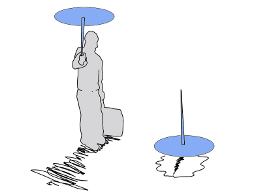All microwave ovens have cools spots where the intensity of radiation may be lower than required to cook food properly.
Today’s invention is a way to ensure that your food gets heated adequately to suppress the proliferation of bugs and also to taste better.
A small disc-shaped reservoir with a microwave-transparent window and a rounded base is filled with water.
As the oven works, two tiny jets of steam are driven from the circumferential pipes shown, so that the reservoir spins on the rotating dish within the oven.
This extra rotation ensures that all parts of the bowl of soup shown will be irradiated correctly.









